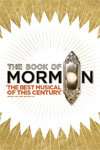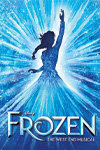 After running in the West End for over 23 years, The Woman in Black has been made into a film, which was released in the UK on Friday. Starring Harry Potter’s Daniel Radcliffe, the film has generated considerable buzz and recouped its entire production budget after making $20 million in its opening weekend in the US.
After running in the West End for over 23 years, The Woman in Black has been made into a film, which was released in the UK on Friday. Starring Harry Potter’s Daniel Radcliffe, the film has generated considerable buzz and recouped its entire production budget after making $20 million in its opening weekend in the US.
Both versions are based on the 1983 novel by Susan Hill and follow a young solicitor, Arthur Kipps, who must travel to a remote village in northeast England to attend the funeral of one of his firm’s clients, the mysterious Alice Drablow. In settling her affairs, he slowly unravels the mystery surrounding her decrepit manor house and first sees the woman in black, who has been haunting the town for years. The legend has it that every time someone sees the woman in black, a child dies tragically. Kipps’ discoveries build to a terrifying climax, with disastrous results.
Here’s a blow by blow account of the play vs. the movie:
|
The Play |
The Movie |
| THE PLOT |
Utilising a play-within-a-play concept, Stephen Mallatratt’s stage adaptation features a frame story, in which the old Arthur Kipps approaches an actor to tell the story on his behalf, in the hopes that by reliving his experience one more time, the ghost of the woman in black will finally be laid to rest.
 |
The film version also strays from Hill’s original plot. In it, Kipps is a widower raising a four-year old son. Inexplicably, his son is going to arrive in the village in four days to be reunited with him. Whilst this does add to the urgency of the situation, it then encourages a further dubious subplot in which Kipps concocts a plan to appease the woman in black in the hopes she will never return.
 |
| THE FRIGHT FACTOR |
The play relies on limited set and props, cleverly creating a chilling and electric atmosphere with the use of just curtains, a door, and a rocking chair. It is the theatricality of the stage version that makes it so successful; it actively embraces both the theatre’s strengths and limitations, and it relies on the audience’s imaginations to create the world of the play.
 |
The film also ups the morbidity considerably, with children getting bumped off left right, and centre (we get treated three little girls jumping out of a window in the first five minutes alone). There are some frights to be had, certainly, but the director, James Watkins, relies on overly obvious motifs and leaves very little to the audience’s imagination.
 |
| THE ACTING |
The current cast of the stage version features David Acton as Arthur Kipps and Ben Deery as the actor. Both are highly accomplished and do a great job alternating between narration and living in the moment of the story. Kipps is particularly impressive, ably switching in and out of multiple roles.
 |
Having seen Daniel Radcliffe on stage in Equus, I’m convinced he has some acting talent (despite what you may feel about Harry Potter). But here, he’s given very little to do other than to look sullen and tortured. I would like to see him in a movie where smiling is a possibility for once. In a somewhat humiliating cameo, current Oscar-nominee Janet McTeer sufficiently chews the scenery as the local crazy woman, Mrs. Daily. The rest of the ensemble is fairly forgettable.
 |
| THE AUDIENCE |
As required viewing for many GCSE drama students, the audience for the play is primarily made up of people under the age of 18 whose reactions range from apathy to hostility. Current star Ben Deery took to Twitter recently to relay that one particularly unruly bunch tripped him during the show whilst hurling homophobic epithets, giving you a good idea of what you may be in for.
 |
I’m pleased to report that at the sold-out screening of the film I attended, there wasn’t a pubescent fan dressed entirely in Harry Potter garb in sight, and that apart from considerable (and warranted) snickering, the audience was, for the most part, well-behaved.
 |
| OVERALL |
Either the film or stage adaptation are sure to fill you with terror at some points, but for pure shock value, and unbridled creativity, the stage version of The Woman in Black is the clear winner.
 |
Whilst the film scores some points for attracting a more attentive crowd, and for some genuinely atmospheric shots of the coastal landscape, it’s generally a silly adaptation.
 |
 After running in the West End for over 23 years, The Woman in Black has been made into a film, which was released in the UK on Friday. Starring Harry Potter’s Daniel Radcliffe, the film has generated considerable buzz and recouped its entire production budget after making $20 million in its opening weekend in the US.
After running in the West End for over 23 years, The Woman in Black has been made into a film, which was released in the UK on Friday. Starring Harry Potter’s Daniel Radcliffe, the film has generated considerable buzz and recouped its entire production budget after making $20 million in its opening weekend in the US.




